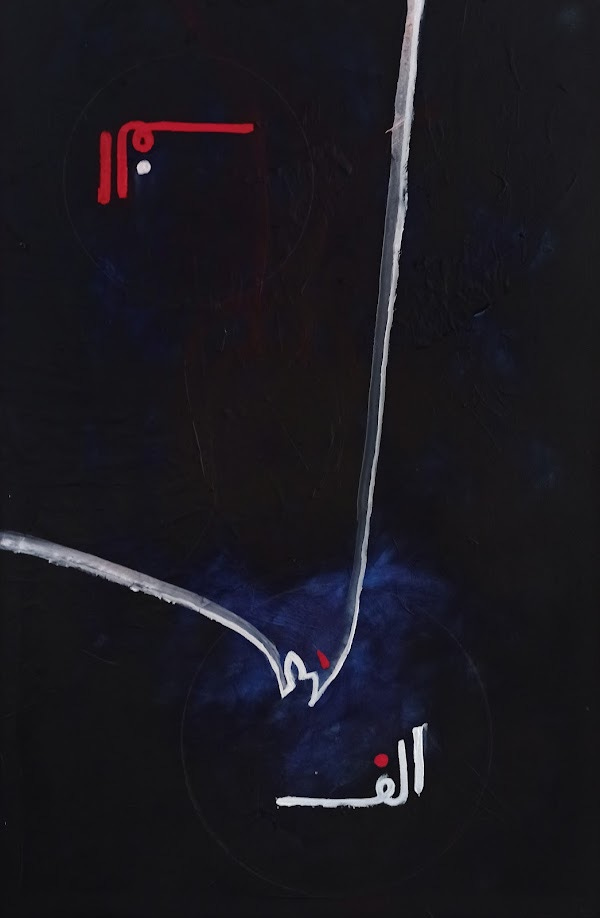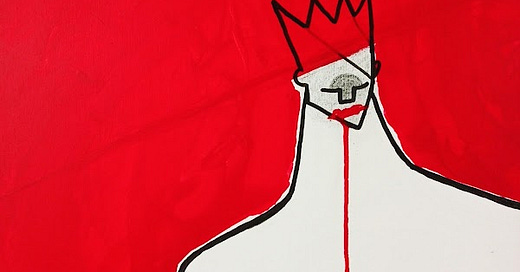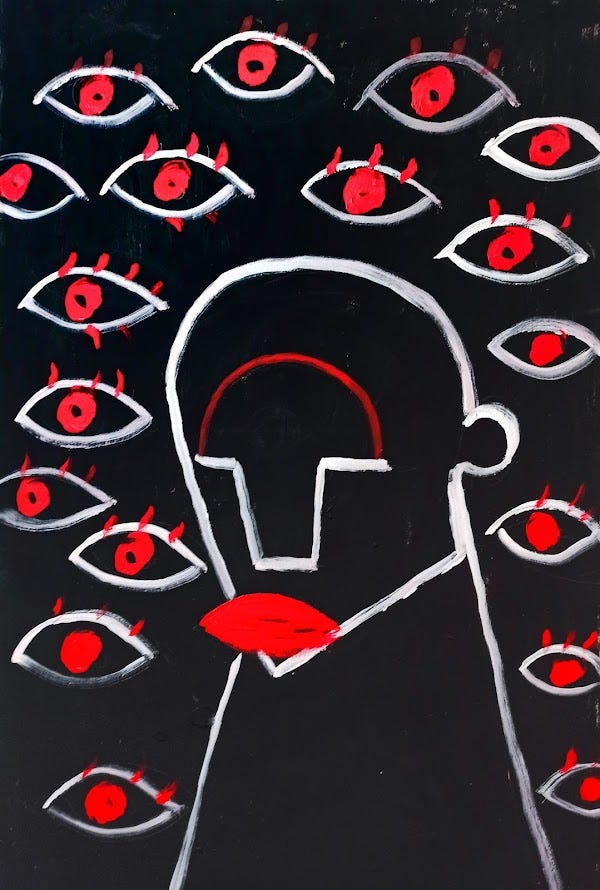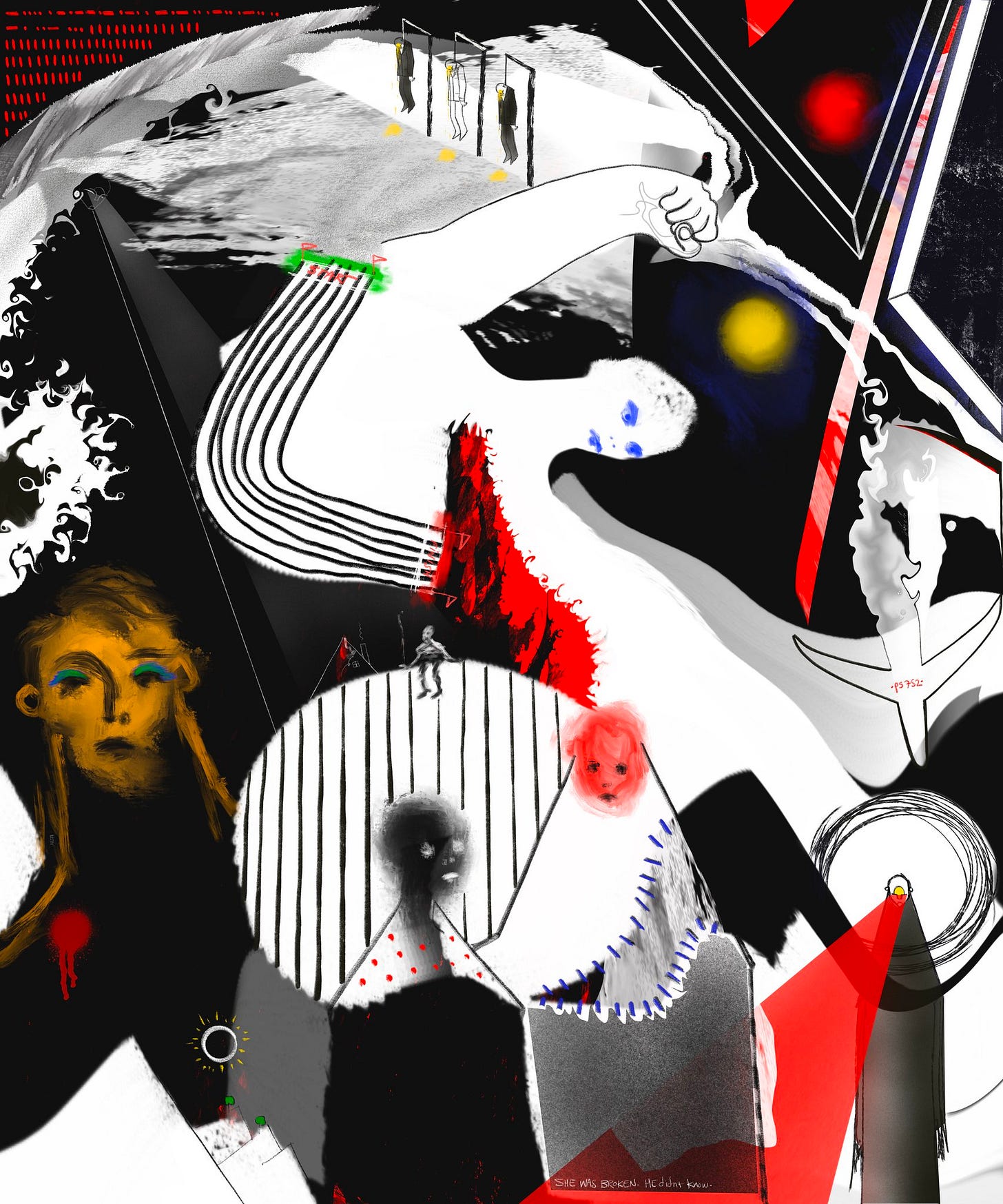"Some things should be known"
Iranian NFT artist "C3naa" uses acrylics and pop art poster ethos to spread the word about horrific experiences inside of Iran, where he lives and creates anonymously.
The trick played on the eye at first is that the poster NFTs and IRL art of Iranian artist C3naa (pronounced like John Cena’s last name) is minimalistic and abstractly cartoonish. It is not bland, because the colors are eye-popping reds and lapis lazuli blues. The surface often races with striking lines and angles.
But in its minimalism and pop art sensibility, the art seems commonplace, a tiny bit vague, and a little bit at a distance, even when the subject seems to pop. This abstract minimalism has a purpose.

C3naa has seen thousands of people die over the past few years. Protests in Iran have led to suicides — self-immolations — and targeted killings have spurred a constant activist anger in the young artist, who began painting when he was three.
“Most of [the] minimalistic style was and is a cautionary measure. If it doesn’t directly look like something; "if" i ever get doxxed, or got in trouble, i can simply deny they have anything to do with politics,” he writes, during an online conversation we are having about his art.
Working in acrylics, and making minimalistic poster art that he sells on OpenSea as NFTs, C3naa feels he is contributing “one person at a time” to a movement to turn the world’s (read: the West’s) attention to the horror and panic that defines life in a “third world” dictatorship.
Posters are commonplace, cheap and have mass appeal. Posters today emblazoned with slogans are paraded in front of protest marches across the world. We have seen them recently with protests in Russia against the Ukraine invasion. C3naa’s depictions of suffering, the hauntedness of living in Iran, are an effort to bring Hollywood-sized attention to a crisis that rolls on, ever since the 1979 Iranian revolution.
He tells me online one evening in April: “i have been an activist whole my life. what people like me in iran or 3rd world countries in general feel is that no one in the world knows about us and no one cares.”
“thousands of people were being killed in [the] span of a month and no one had the slightest idea.”
“i like to change that a person at a time. some things should be known and should never be forgotten.”
Many of the artworks are odes or remembrances of real people who died, or massacres that were committed by the state against innocent Iranian people, like the subject of “the blue girl.”
In one poster art in acrylic, a fiery red immolation of hair takes up almost the entire 2/3rd of the canvas, and a diminutive girl in a blue dress becomes a focal point lower down in the lefthand corner.
The immolation is exactly that. Sodar Kodahyari killed herself in 2019 by setting herself on fire, after she was arrested and persecuted for trying to enter a football stadium, which is against the law for young women in Iran.
While C3naa has extremely polemical things to say about the suffering of the Iranian people, he also tries to work with puns and eye winks to the snarl of history he lives in. The work is not meant to directly mimic brutalist propagandist style lines, but he makes references to that in an abstract way so that those who are paying attention might read between the lines and see the cruel potential twist of irony reflected back on the new kings of Persia.
“i never wanted to mimic them. but i sure as hell love to make fun of them.”
“like inside humor or jokes. i put a lot of them in my works when it feels like it.”
He leans on this for reference in a painting called “throne of blood.”
“islamists revolted to dethrone a king,” he says. “they ended up being the worst kind of monarch dictators,” he writes.
A few days later, I ask him in passing if he had ever seen Persepolis. He gushes with enthusiasm.
“i love that book and movie. there is a resistance in iran. that keeps getting stronger and more widespread,” he writes. Pushing out art on a nearly daily basis brings more and more attention.
“spreading awareness in any matter makes that matter expensive, that’s the goal,” he writes. “u have to get the price of doing that action expensive for regime. that’s the power of information and spreading it. if we somehow reach these news to people in outside, it now gets expensive for the regime. these actions should be known outside.”
And a few hours later, he sends a link to an OpenSea auction. He writes: “my 1st ever auction. i will be happy if you share it ser.”
The work is below. The link to the auction is here.







